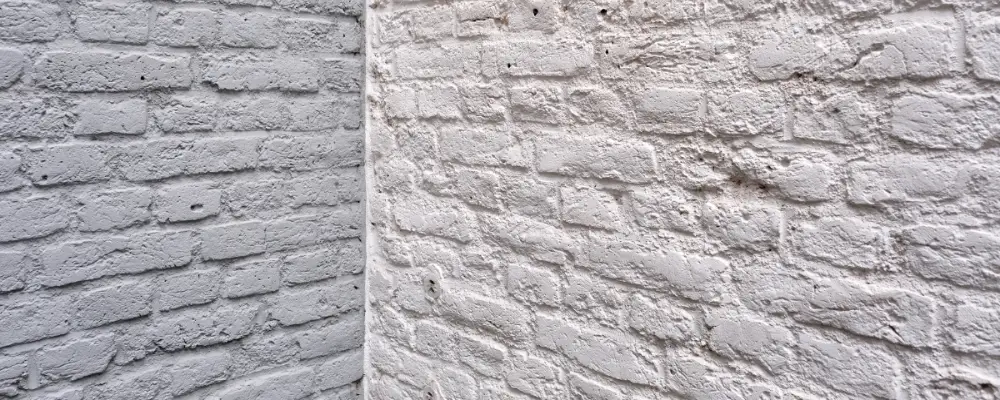Bonding of bricks is the way the bricks are arranged in a certain way using mortar to form a structure such as walls, pathways, floors, etc. There are numerous bonds in brick masonry, each has a unique style, purpose, properties, advantages, and disadvantages. Although there are multiple types of bonds in the construction industry, a stretcher bond is one which is widely used for a variety of applications. Here we take a look at what a stretcher bond is, its properties, applications, advantages, and disadvantages.
What is a Stretcher Bond?
The longer narrow face of the brick is called a stretcher (9”x3”). As the name suggests, the bricks that are arranged with the stretchers on the faces of the walls are called a stretcher bond. This is also called a running bond. Only the stretchers are visible in the structure on the external and internal surfaces. The overlaying bricks are arranged in the midpoint of the underlying bricks, showing a uniform pattern in alternative layers.
Applications of a Stretcher Bond
- Stretcher bonds are primarily used in exposed walls of steel and reinforced concrete structures.
- These bricks are also applicable in the construction of boundary walls and garden walls.
- Used for structures that need only half the brick thickness such as partition walls and balconies.
- Ideal for the construction of straight walls and short-spanned walls.
Properties of a Stretcher Bond
Visible narrow face
The stretcher bonds are laid with the long narrow face of the bricks facing the wall. This way of building makes only the narrow face visible on the external and internal surfaces of the wall.
Thickness
The thickness of the structure that is built with a stretcher bond is half the size of the brick. The minimum thickness of the structure is 4.5 inches without plastering.
Overlapped Half-Breadth
The overlaying bricks are arranged in the midpoint of the underlying bricks, showing a uniform pattern in alternative layers. These arrangements help in fine bonding and uniform distribution of loads.
Strength & Stability
These bricks have less load-bearing capacity and the pressure is not evenly distributed. This makes it unstable and unsuitable for load-carrying structures. A column-like masonry brick structure is built in between to support the structure.
How to Construct a Stretcher Bond?
- Prepare the mortar by blending cement, sand, or other adhesives with the appropriate amount of water.
- Blend all the raw materials into a mixture that is suitable for binding the bricks together.
- Prepare the bricks necessary for the construction of the structure, (by choosing the right bricks and calculating the number of bricks required).
- Put some cement mortar of the right consistency on the ground surface before placing the first layer of bricks.
- The bricks are placed over the cement mortar, with the longer narrow face (9”x3”) of the brick laid on the face of the wall.
- Arrange all the bricks in the same alignment until the first row of bricks is aligned with small gaps for mortar, to fill the gaps and bind the blocks.
- Use a spirit level or bob level to check whether the angle is accurately 90 degrees.
- Put some mortar over the first layer of brick and place bricks over it, in half of the breadth (Stretch) of the underlying brick, making the alternate layers have similar alignment.
Advantages of Stretcher Bonds
- Stretcher bond is easy to construct and requires low effort and time.
- No skilled labourers are required for the construction, except for producing the right consistency of mortar.
- Less or no material waste is produced, as there is no need to cut the bricks in half.
- Can work effectively with steel structures and reinforced concrete frames.
- Walls with low width or thicknesses can be obtained.
Disadvantages of Stretcher Bonds
- Only used for the construction of half-brick-thick walls.
- Stretcher bonds with adjacent bricks cannot be as effective as full-width thick brick walls.
- Not stable enough to stand alone over longer spans and heights.
- They require supporting structures, such as brick masonry columns at regular intervals for effective support for a longer span.
- Not effective for curved surfaces or other rounded surfaces, as they may not be as effective as they are for straight structures.
Conclusion
Stretcher bonds are commonly used brick bonds both for external and internal structures. These bricks are arranged on the narrow head, making it one of the easiest ways to construct that does not require skilled labour. These bonds build a thin structure that is suitable for compact areas. However, the structure under this bond cannot carry heavy loads, due to its poor weight distribution. Although these brick bonds have both positives and negatives, they are widely applicable and effective when used with steel and reinforced concrete frames.

